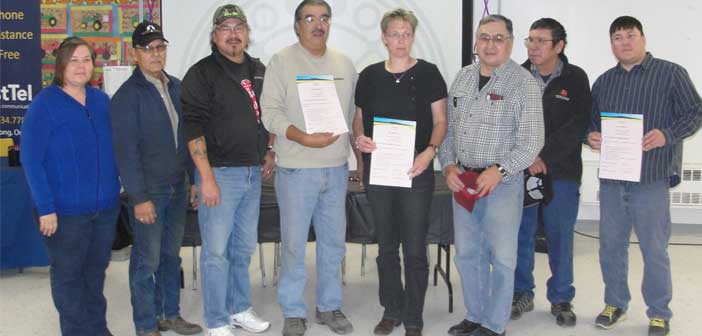A week and more has passed since the tragic murders of Warrant Officer Patrick Vincent, run down by Martin “Ahmed” Coutare-Rouleau in Sait-Jean-Sur-Richelieu, Quebec and Corporal Nathan Cirillo, dramatically shot at close range at the National War Memorial in Ottawa by Michael Zehaf-Bibeau.
The second murder had the added drama of the shooter being able to cover the ground between the War Memorial and parliament buildings and to enter the centre block through the main doors below the Peace Tower. He was famously fatally shot by Sergeant At Arms Kevin Vickers before he wreaked any further havoc he had no doubt planned for our elected parliamentarians and House of Commons staff.
Canadians were left spinning last week as these domestic attacks on military personnel and the fact that the Ottawa shooter and his weapon had been able to avoid security and invade the main building of Canada’s parliament.
At first, in panic mode, it was tempting to think that this was our “mini 911” event and, just as President Bush’s administration had put it in 2001 a day or so after the World Trade Towers attack, that “things will never be the same again,” these Canadian events, as tragic and unsettling as they were and are, by no means require us to live in fear as we live our day to day lives.
For sure, the day-to-day security surrounding the government buildings in downtown Ottawa will need to be addressed and appropriate measures put in place to ensure that lone terrorists do not have unrestricted access to these important places.
Also Read:
- Terrorist attack on soldiers in Ottawa—Parliament Hill under siege
- Commitment against ISIS should come with end date
But the reality is, as we learn more and more about the pair, Martin “Ahmed” Coutare-Rouleau and Michael Zehef-Bibeau, that they each acted alone although possibly (and likely) each was motivated in some way by, and was certainly attracted to, the terrorist methods that characterize Al-Queda and, more recently, the militant Muslims attempting to subjugate part of the Middle East to become part of a new Islamic State (IS) that would be superimposed across borders including those of Iraq, Syria, possibly Jordan (among others).
Each young man was a fairly recent convert to the Muslim faith and each had embraced the most radical extremes that look to terrorist activities to define them.
It is not unreasonable to think that had these two young men, both of them Canadians from middle class backgrounds, not embraced the Muslim faith and found within it this extremely antisocial way of dealing with the world that they would have found an alternative and equally anti-social way of manifesting their hatred and disdain for the Canadian status quo.
It’s easy to say they were politically motivated in the same way that, say, Patrick Whelan was in 1868 when he assassinated one of the Fathers of Confederation, Thomas D’Arcy McGee (in Ottawa, close to the National War Memorial, as it happens) because Whelan was associated with the Irish Nationalist Fenian movement and McGee (originally from Ireland) was deemed to be part of the British establishment in North America.
This is a vastly simplified story of Canada’s first political assassination, but Whelan, although he swore he did not do the deed, was convicted of murder and was hung, publically.
But it was a political assassination.
The angry young men who committed last week’s mayhem probably knew as much about the ISIS/ISIL/IS terrorist tactics as any of us do from what we glean from television news reports and if they saw themselves as political activists their explanations would have been, at best, confused.
They were, however, radicalized and if these unhappy souls hadn’t taken this particular anti-social path in all likelihood they would have found another, equally socially unpleasant way to lash out at a society with which they did not identify.
True internal political terrorism in Canada, beginning with McGee’s assassination 146 years ago, has been rare.
Of course the Quebec nationalist FLQ in Quebec, also a terrorist organization, managed to kill and injure several people by means of planting explosives in, among other places, public mailboxes in the late 1960s and then in 1970, they kidnapped and murdered Pierre LaPorte who was at the time Quebec’s labour minister.
The Air India bombing in 1985, through which 329 people, most of them Canadians, were killed when the infamous “Flight 182” exploded in the air space over Lockerby, Scotland, stands as this country’s most notorious act of political terrorism as the aircraft and its lethal load embarked from Vancouver International Airport.
The motivation was political, once again directed at freedom struggles for a political group (the Sikhs in India’s Punjab province) in another foreign land.
The outcome of the Air India bombing revealed that those behind this crime were already known to police and intelligence services who had failed to move cooperatively and swiftly enough to avoid the carnage over Scotland.
If nothing else, this should have been a lesson to those tasked with collecting intelligence about and monitoring individuals within this country who have shown to be radicalized and possibly be capable of doing what Martin “Ahmed” Coutare-Rouleau and Michael Zehaf-Bibeau did last week.
Coutare-Rouleau, we know for sure, was known to authorities. Zehaf-Bibleau was in the process of seeking a passport so he could travel to Saudi Arabia.
Had Coutare-Rouleau been tracked and stopped before he murdered Warrant Officer Vincent on the Monday, there is a real possibility that we might not have had a Wednesday incident at all.
Our government and our police authorities at every level have as their first order of duty the protection of Canadian citizens.
If people known to them as radicals need to be tracked and monitored on an ongoing basis, so be it.
The Air India tragedy should have taught this lesson to these authorities. Last week’s murders at the hands of radicalized people must be, if nothing else, a wake-up call for increased vigilance.



